Hemp seeds, rich in protein and essential fats, are hulled to create hemp hearts or pressed for their oil. The profitability of a hemp grain crop is largely dictated by the plants’ genetics, which is why choosing the right cultivar is fundamental to success. FINOLA is popular as the robust auto flowering variety provides farmers a predetermined harvest date, as well as protection against unpredictable weather late in the season.
Hemp Harvesting
Hemp Seed
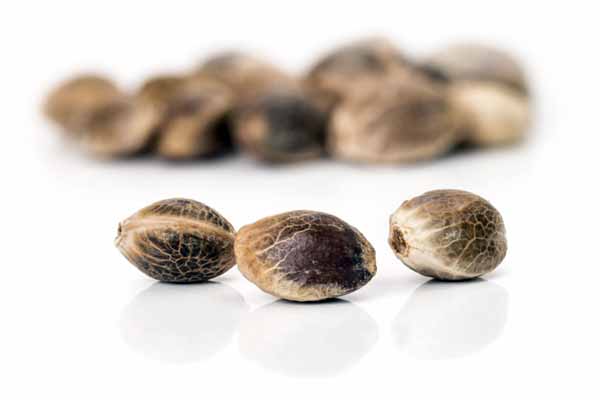 Strains are consistently developed to increase yield quantity and quality, with breeders selecting those with exceptional nutritional value to increase competitivity against other seeds. Large seed sizes are prized, with shorter and early maturing plants providing greater flexibility in the harvest window.
Strains are consistently developed to increase yield quantity and quality, with breeders selecting those with exceptional nutritional value to increase competitivity against other seeds. Large seed sizes are prized, with shorter and early maturing plants providing greater flexibility in the harvest window.
Dioecious hemp strains, with male and female organisms on separate plants, are considered the best for grain production. However, as only males provide hemp seeds females need to be weeded out. To avoid this, farmers may select monoecious strains that enable farmers to perform a dual harvest of both fibre and seed. However, those with the highest seed production tend to deliver lower fibre yields. Whichever genotype hemp farmers opt for, the variety needs to be adapted for their climate, latitude and certified in the farmer’s jurisdiction. For peace of mind, some cultivars have such a low THC content that they are exempt from testing.
Hemp thrives in warm climates with modest, but frequent, rainfall. Land previously used for corn and canola often provides favourable conditions, with plant’s benefitting from extended daylight hours. As the site’s latitude dictates daylight hours and season length, farm location needs to be considered when selecting genetics. Soil should be free of herbicides, heavy metals and slightly acidic, with a pH between 5 and 7.5. Hemp requires a loam soil consistency that provides ample drainage, as crops are vulnerable to flooding. A fine soil consistency also supports germination and early growth, with the crop resilient to weeds after this initial phase.
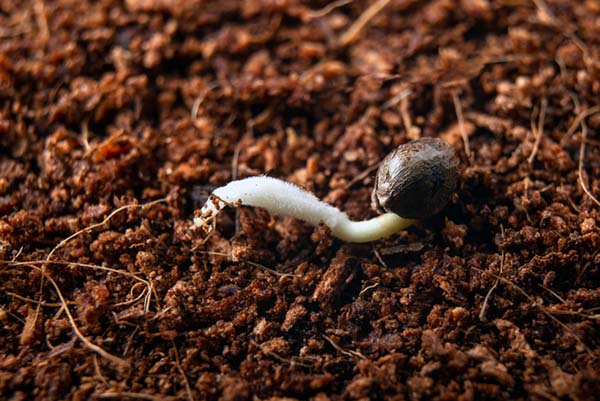 Hemp grown for its seed in the Northern Hemisphere is typically planted in May or June, depending on location and phenotype. As a grain crop, farmers sow hemp in narrow rows at a rate of 40,000 per acre. By planting seeds close, together farmers maximize their space, prevent weeds and from a canopy quickly, which deters pests and boosts yield.
Hemp grown for its seed in the Northern Hemisphere is typically planted in May or June, depending on location and phenotype. As a grain crop, farmers sow hemp in narrow rows at a rate of 40,000 per acre. By planting seeds close, together farmers maximize their space, prevent weeds and from a canopy quickly, which deters pests and boosts yield.
Hemp seeds should be sewn evenly as shallow as possible, up to ¾ ” deep. This enables plants to develop beyond infancy as quickly as possible, when they are at their most vulnerable. To accelerate germination, soil should be kept damp in temperatures above 5 ˚C. In the right conditions, seeds should germinate in under two weeks. Once seeds have germinated, farmers can forecast yield and determine the required harvesting solutions to accelerate time-to-market. On average, farmers typically yield 1,500 lbs of grain per acre, with organic farmers producing approximately 800 lbs an acre.
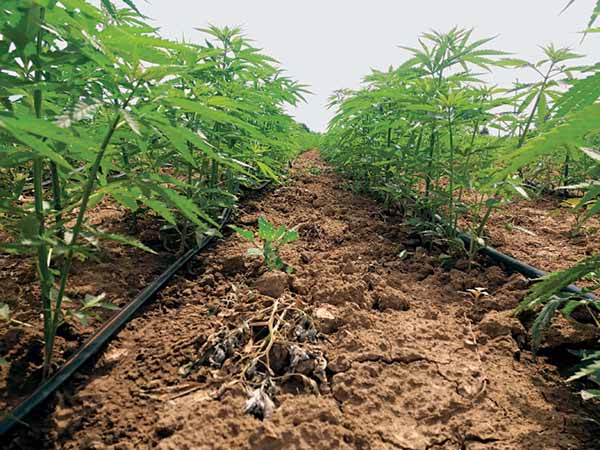 Treating soil a week prior to planting prevents weeds when they are the biggest issue, when hemp is less than a month old and under a foot in height. The following month hemp hits a rapid growth stage and can stretch by five feet, at which point weeds should no longer be a concern. As regulations governing herbicides and pesticides in hemp farming vary by country and even between states, farmers should consult the guidelines prior to application.
Treating soil a week prior to planting prevents weeds when they are the biggest issue, when hemp is less than a month old and under a foot in height. The following month hemp hits a rapid growth stage and can stretch by five feet, at which point weeds should no longer be a concern. As regulations governing herbicides and pesticides in hemp farming vary by country and even between states, farmers should consult the guidelines prior to application.
The required nitrogen, phosphate and potassium to cultivate hemp grain is largely dependent on soil condition, genetics and when the plants will be harvested. Early maturing varieties require less nutrients, but as a rule of thumb hemp grown for grain requires roughly 135 lbs of nitrogen, 55 lbs of phosphorous and 80 lbs of potassium per acre. When utilizing fertilizer, farmers should avoid foliage application which may damage crops and reduce yield. Irrigation may be required during periods of intense heat or draught, with hemp benefitting from drip tape systems that deliver water directly to the crop’s roots.
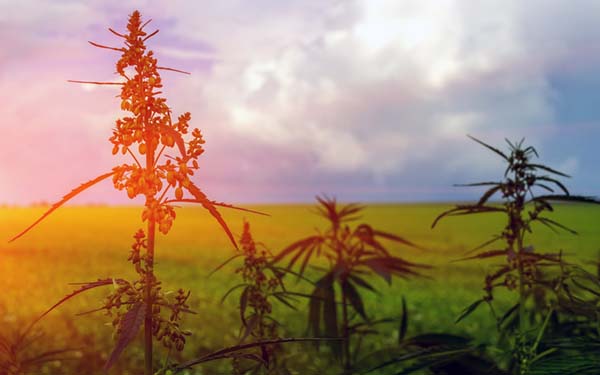 From month two onwards, seed bracts should form from the bottom to the top of plants. By month three, seeds heads will begin to mature and by month four the hemp grain should be exposed. Hemp grain should be harvested when 80% of the seeds are ready, with roughly 15% moisture. A trusted indicator that the crop is ready to be harvested is when seed husks begin to harden. Once tough, grain must be collected quickly to maintain yield. If plants become too dry, seeds may fall from the crop and be lost.
From month two onwards, seed bracts should form from the bottom to the top of plants. By month three, seeds heads will begin to mature and by month four the hemp grain should be exposed. Hemp grain should be harvested when 80% of the seeds are ready, with roughly 15% moisture. A trusted indicator that the crop is ready to be harvested is when seed husks begin to harden. Once tough, grain must be collected quickly to maintain yield. If plants become too dry, seeds may fall from the crop and be lost.
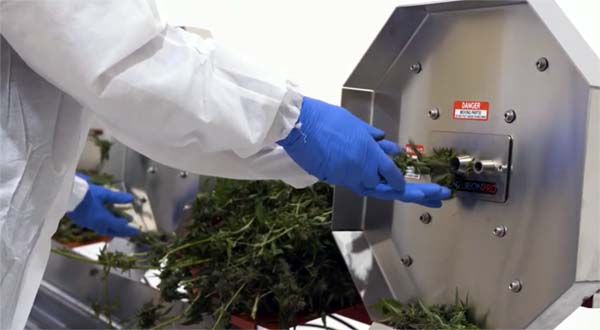
When harvesting plants, farmers should minimize the amount of fibre that enters machinery to avoid blockages. Plants should be cut 12“ below grain heads, which minimizes the risk of jams but retains enough stem for bucking. Threshing can damage hemp fibres, but specialist bucking machines preserve stalks so its fibre can be processed for an additional source of revenue.
Hemp is incredibly tough and can cause problems for conventional harvesting equipment. The drier the plants, the greater the likelihood of fibres clogging equipment. If grains are harvested with too much moisture however, they tend to develop mould. The longer hemp is damp the longer it is susceptible to pathogen growth, which heightens the urgency to harvest seeds as quickly as possible.
As excess leaves and stalks can obstruct airflow in the grain bin, stems need to be comprehensively stripped and separated for seeds to dry properly. To carefully separate seed from stems efficiently, farmers need elite bucking solutions. CenturionPro’s industrial harvesting solutions are developed to process both wet and dry hemp at unrivalled speeds, with feed rates that can exceed 2,000 lbs of wet hemp per hour. CenturionPro’s elite de-stemming machines slice entire seed groups from the stem, which prevents clusters from breaking apart. The High Performance machines provide a range of infeed sizes, to ensure every single seed is harvested and to maximize profits.
Once grain has been de-stemmed, it needs to be cleaned and dried thoroughly before storage. Seed needs to be run through a grain cleaner to remove remaining bracts before entering a grain bin. Bins should be filled halfway to promote aeration, with the grain turned frequently to avoid hotspots and moisture development. Once hemp grain contains less than 8% moisture, it should be placed on a conveyor belt to be slowly air dry and be sorted before entering storage. The more the gradual the drying process, the less likely seeds are to crack.
Contact Us
Our staff would be happy to assist you with any questions about CenturionPro, purchasing a bud bucking or trimming machine, or replacement parts.

Book A Call
Need guidance on which trimmer is right for you?
Our sales team is always ready to work with you on finding the right machine for your harvest and future growth.
Find A Retailer
Our store locator helps find local retailers that sell CenturionPro machines and parts. If your favorite hydroponic store is not listed, they can drop-ship through us. Simply ask them to call 1-855-535-0558

Support Center
Need help with your harvest? Our support center has comprehensive video manuals, brochures, DIY tutorials, FAQs, Harvest Tips and Warranty information in one easy-to-navigate hub.


